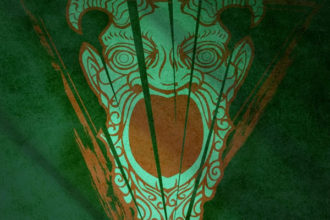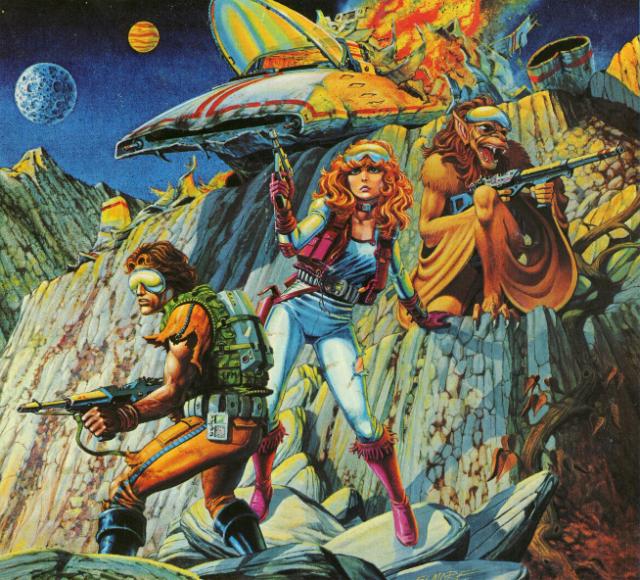Aquatic Hazards

I was so happy to have Tasha’s Cauldron of Everything expand the collection of hazards in 5e that I jumped at the chance to write some for Under the Seas of Vodari. I’ve gone for a mix of real phenomena and fantastical things, though I think the overall weirdness level is still fairly tame. There are also a few important Vodari lore nods showing up here.
Aquatic Hazards
Tangle Kelp
Kelp forests grow in shallow waters at medium temperatures, ranging in size from dozens of square feet to hundreds of square miles. Areas of tangle kelp, a species of kelp that is especially likely to adhere to clothing, skin, or scales, are typically found as part of larger kelp forests. The tangle kelp itself occupies three adjoining 10-foot cubes. A creature can distinguish tangle kelp from other forms of kelp with a DC 15 Intelligence (Nature) or Wisdom (Survival) check.
A non-plant creature that enters an area of tangle kelp for the first time in a turn, or begins its turn there, rolls a DC 12 Strength saving throw. On a failure, the creature’s swimming speed is reduced to 5 feet until the start of its next turn. Creatures wearing seaweave armor (see page XX) have advantage on this saving throw.
Hydrothermal Vents
These seafloor fissures constantly emit clouds of white or black minerals, looking much like columns of cloud in the water. They are most common in regions more than 8,000 feet deep, but can appear at lesser depths as well. The history of the aurirn dwarves is intimately connected with mining hydrothermal vents.
A cylindrical area of 5-foot radius extends upward from the fissure. The area is heavily obscured within a 500-foot-high cylinder. Within a cylinder 100 feet high from the fissure, the water is superheated; when a creature enters the area for the first time in a turn or starts its turn in the area, it rolls a DC 14 Constitution saving throw, taking 14 (4d6) fire damage on a failure, or half damage on a success. This damage ignores resistance to fire damage from being submerged in water.
Underwater Sandstorms
The ocean has its own kind of sandstorm, stirred up by currents, by objects (usually carcasses or scuttled ships) sinking to the sea floor, or aquatic burrowing monsters emerging to attack prey. The sand poses just as much difficulty for water-breathers as airborne sandstorms do for air-breathers.
The area of an underwater sandstorm covers a hemisphere with a radius of anywhere from 10 to 500 feet. For a random area, roll 2d10 x 5 ft. The area is heavily obscured and is difficult terrain for swimming creatures. Any creature that enters the sandstorm for the first time on a turn or starts its turn in the storm takes 11 (2d10) slashing damage, and must roll a DC 13 Constitution saving throw. On a failure, it can take either a bonus action or an action this turn, but not both.
Toxic Water
The sea can be poisonous or unbreathable in different ways.
Algal blooms are an overgrowth of algae in an area, often due to an influx of nutrients in the water. Algal blooms are visible up to the limit of sight range, as they discolor the water in sickly shades of green or red. They occupy a sphere with a radius of up to 300 feet, or an underwater hemisphere when found on the surface. A creature that enters the area of an algal bloom or starts its turn there must roll a DC 14 Constitution saving throw, taking 15 (3d10) poison damage on a failure, or half damage on a success. Each minute that a creature is exposed to an algal bloom, it must roll a DC 11 Constitution saving throw, contracting sewer plague on a failure.
Deoxygenated water most often occurs as the result of pollution in Xoleni waters, but can also occur naturally as the result of algal blooms. This has predictably devastating effects on oceanic flora and fauna, especially coral reefs. A creature within 30 feet of an area of deoxygenated water can discern that the low oxygen with a DC 10 Wisdom (Perception) check. A water-breathing creature can’t breathe in an area of deoxygenated water and must hold its breath or begin suffocating.
Methane bubbles rise from the seafloor in some areas, particularly as the result of decomposition. A creature within 30 feet of methane bubbles can detect it with a DC 10 Wisdom (Perception) check. A creature within a mile of methane bubbles can predict their location with a DC 15 Intelligence (Nature) check. A cloud of methane bubbles is a sphere with a 30-foot radius. Water-breathing creatures can hold their breath to avoid the effects of methane bubbles. Otherwise, they roll a DC 13 Constitution saving throw. On a failure they are poisoned for 1 minute.
Dakri Venom Shrouds
This semisolid webbing is a remnant of a time when the dakri poisoned the currents that passed through the varu fortifications. The toxins have changed and congealed over time, often settling like webbing over ruins and shipwrecks. A dakri venom shroud is reddish-brown and can cover almost any size of structure. Passing safely through the gaps in a dakri venom shroud requires a DC 15 Dexterity (Acrobatics) check. A creature that fails this check takes 9 (2d8) poison damage on contact and has its movement speed halved for 1 minute.
Violet Wrack
This eye-catching purple seaweed grows in sunlit seas, in strands up to 5 feet long. Submerged ruins also frequently have growths of violet wrack. It can be harvested by aquatic peoples or divers from the surface and turned into valuable dyes or medicine, but in its natural state, it carries an insidious neurotoxin. A creature that comes into contact violet wrack rolls a DC 14 Wisdom saving throw. On a failed saving throw, it takes 9 (2d8) psychic damage and is paralyzed for 1 minute. At the end of each of its turns, it can attempt a new Wisdom saving throw, ending the paralyzed condition on a success.
Varu Protector Stelae
The varu built and inscribed these metal-plated stone pillars to mark and guard the borders of important settlements and fortifications. The millennia have destroyed many stelae, and those that remain malfunction as often as not. A creature that moves to within 10 feet of a stela for the first time on a turn rolls 1d4 and receives the result from the table below. Varu characters roll twice and use whichever result they prefer; if they roll doubles, they can choose for the stela to have no effect.
1d4 – Effect
1 – The stela sounds a loud alarm, audible to all creatures that aren’t deafened within 1 mile. One creature within 60 feet of the stela that is hostile to you rolls a DC 13 Wisdom saving throw. On a failure, it takes 1d20 psychic damage and has disadvantage on attack rolls against you until the end of its next turn.
2 – A jet of force erupts from the stela. Make a DC 13 Strength saving throw. On a failed saving throw, you take 2d6 bludgeoning damage and you are pushed 30 feet away from the stela. On a success, you take half damage and you can choose to be pushed up to 30 feet away from the stela.
3 – Lightning arcs off of the stela. Make a DC 13 Dexterity saving throw. On a failure, you take 2d12 lightning damage, and a random creature within 10 feet of you takes 1d12 lightning damage. On a success, you take half damage and no further effect occurs.
4 – The stela mistakes you for a varu defender. You gain 1d12 temporary hit points.
A varu protector stela has AC 18, is immune to poison and psychic damage, and might have 10, 50, or 200 hit points, depending on its condition. A creature can disable a stela for 10 minutes with a DC 15 Dexterity (thieves’ tools) or Intelligence (thieves’ tools) check.
Design Notes
There is so little to go on when it comes to setting damage values for hazards. I’m keenly reminded that 4e’s wonderful library of fantastical terrain and hazards in the DMG 2 (if you don’t know, still one of the greatest books of DMing advice and inspiration out there, edition be damned) had damage values that scaled by tier. That’s not a thing in 5e hazards, and… I get why, 5e would see that as the ordinary parts of the world getting more dangerous just because you got tougher. You’ve just got to hit someone for 2d8 or whatever a lot to matter after a certain point.



